Abstract
From 1976 to 1980, 1034 infants with birth weights of 500-2000 g were cared for in the neonatal medical unit; 724 were discharged. Twenty (2.8%) subsequently died and 654 (90.3%) were followed up at a median age of 3 years 3 months. Fifty five (7.6%) survivors had major neurodevelopmental handicaps not attributable to congenital anomalies. Increasing prevalence of major handicap was found with decreasing birth weight and gestation. Children with birth weights of less than 1251 g had a higher incidence of all major disabilities. Handicapped children with a birth weight less than 1251 g were more likely to have blindness, deafness, multiple disabilities, and more severe cerebral palsy. There were 146 (20.2%) children with minor disabilities: neurological impairments (n = 11), borderline results on psychometric testing (n = 18), visual impairments (n = 52), hearing impairments (n = 40), and speech impairments (n = 71). Children weighing less than 1251 g at birth had a higher incidence of minor visual and hearing impairments. In 389 children the mean Griffiths quotient was 101.6 (SD 17.2) (range 50-147), and 158 children had a mean Wechsler preschool and primary intelligence quotient of 101.8 (13.2) (range 56-127): these quotients did not vary with birth weight or gestation but did vary with socioeconomic group, schooling, and family structure. During the study period an improving prognosis in terms of both survival and handicap was observed in children weighing less than 1251 g at birth.
Full text
PDF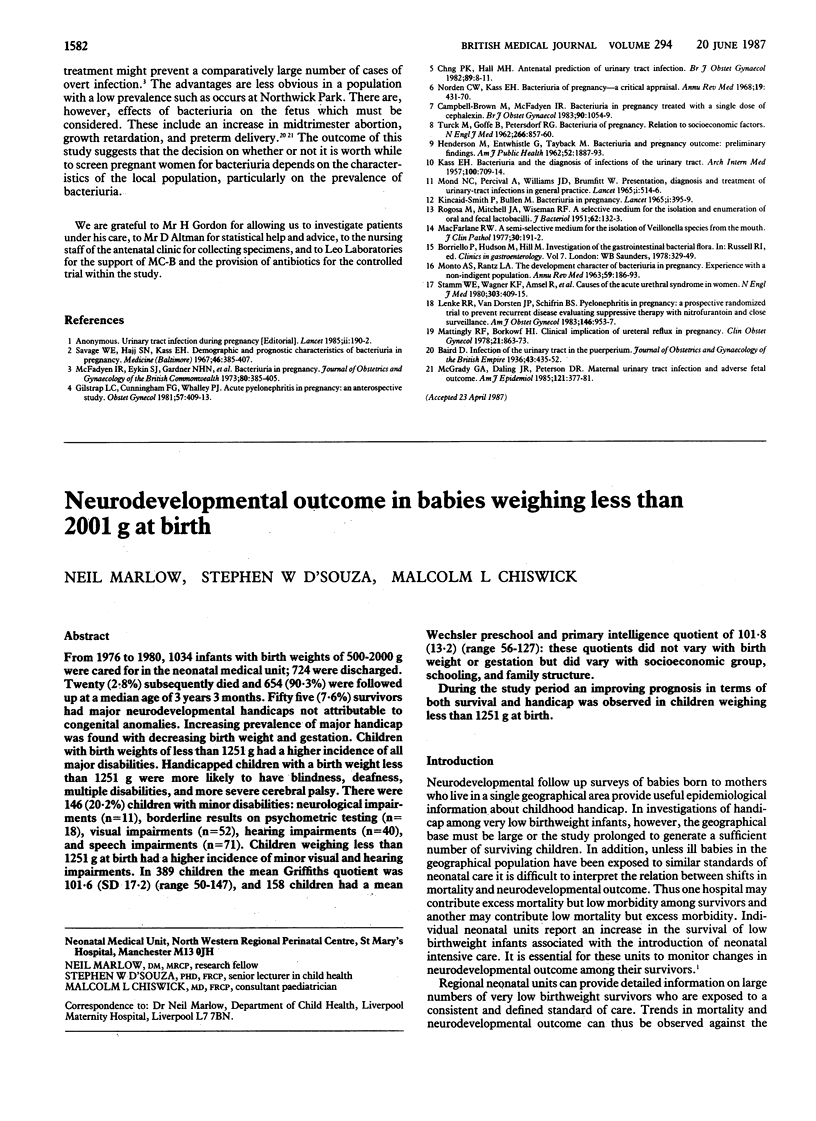
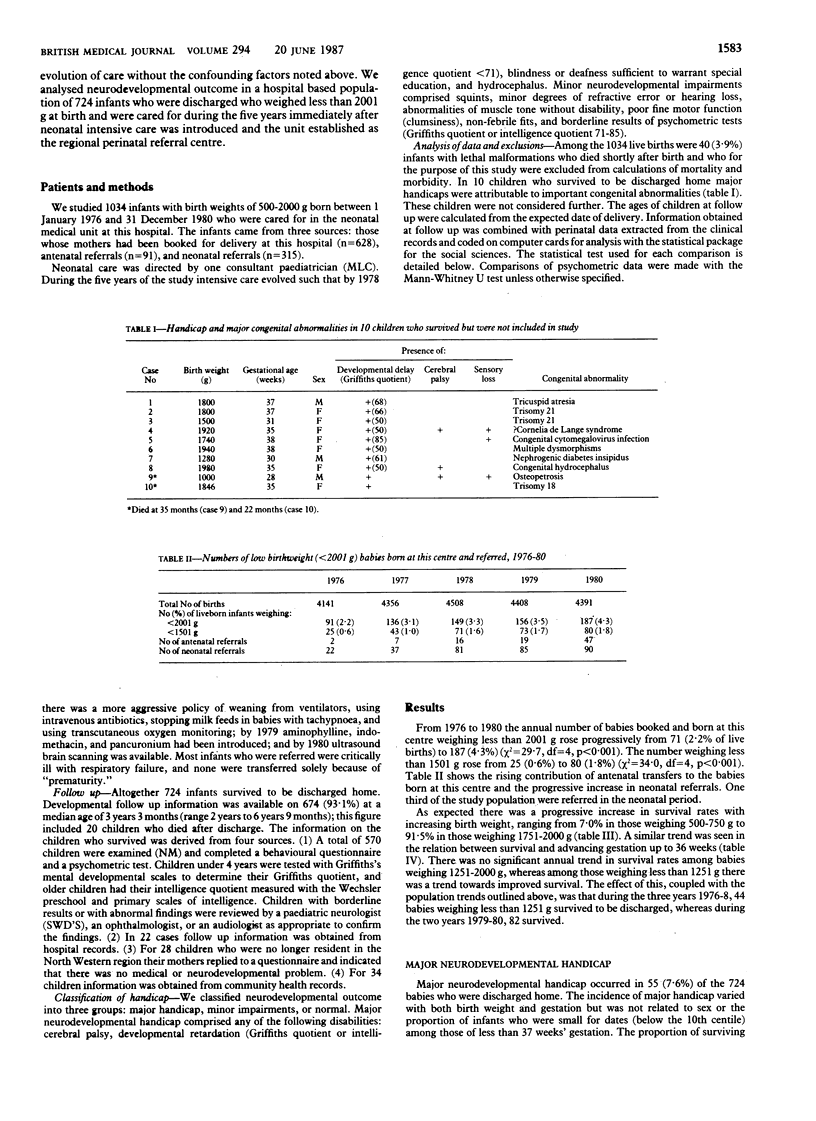
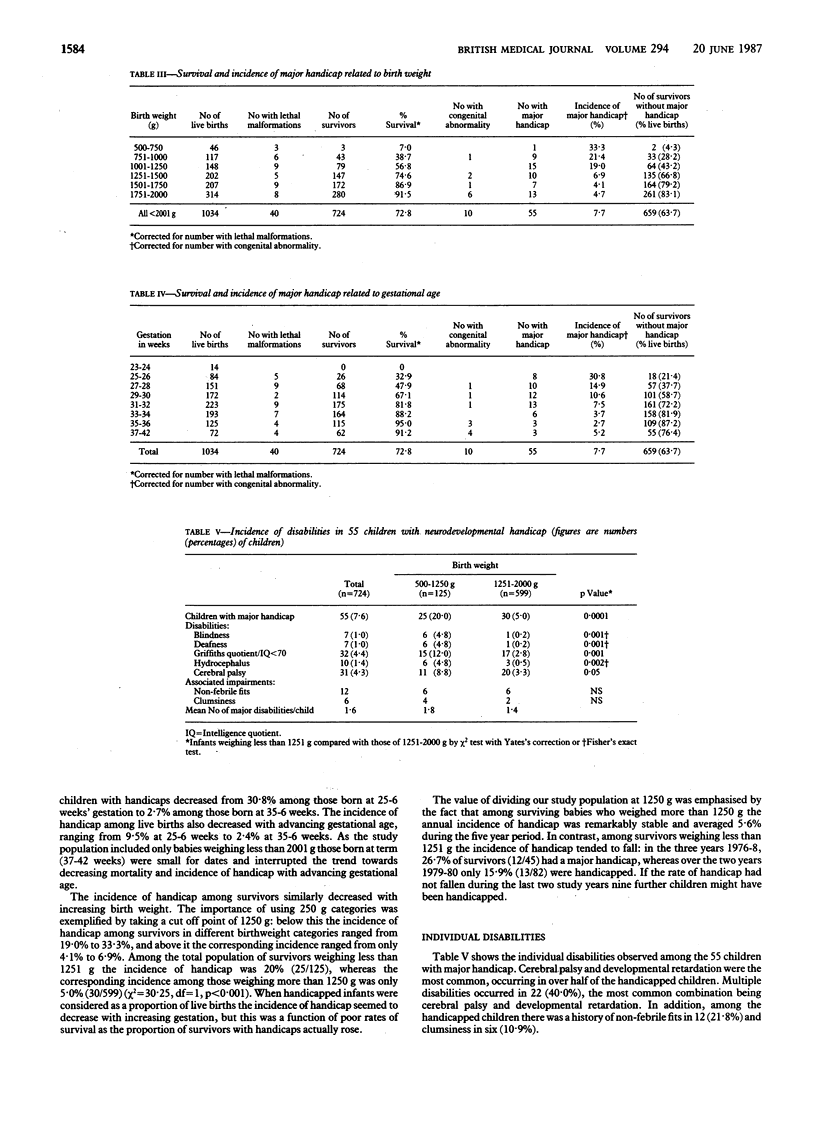
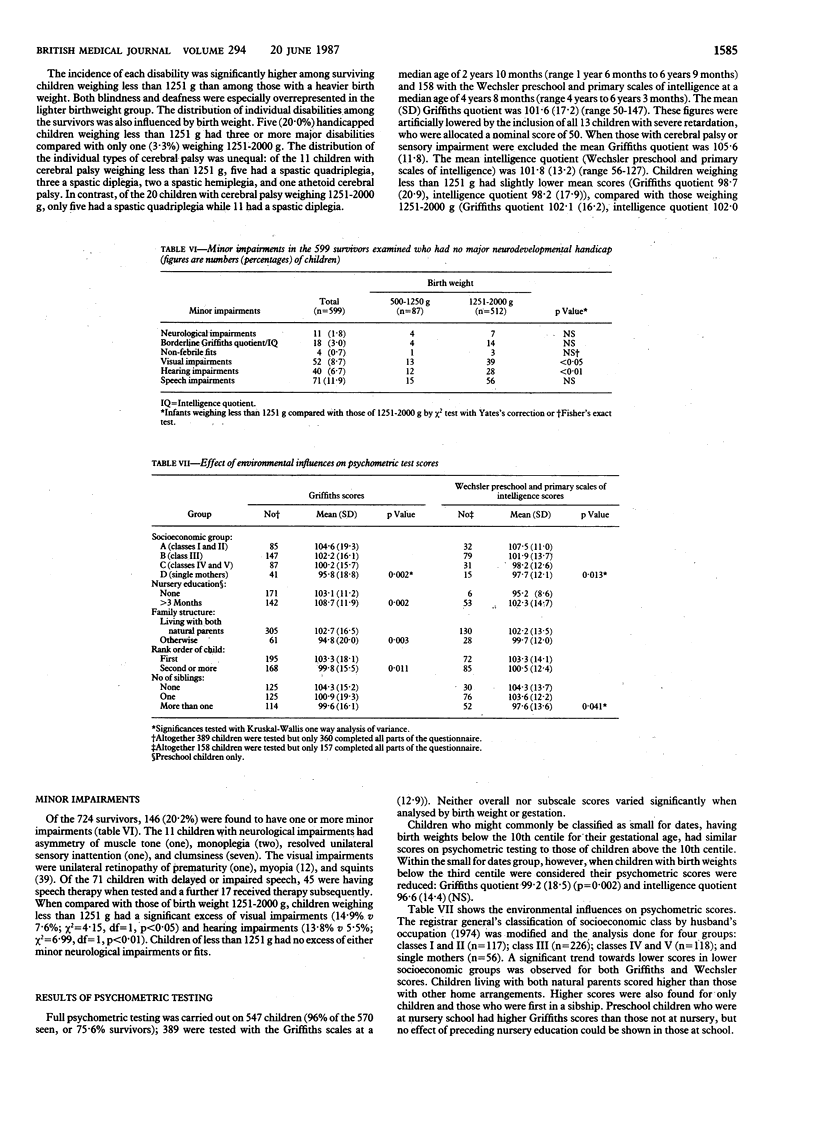
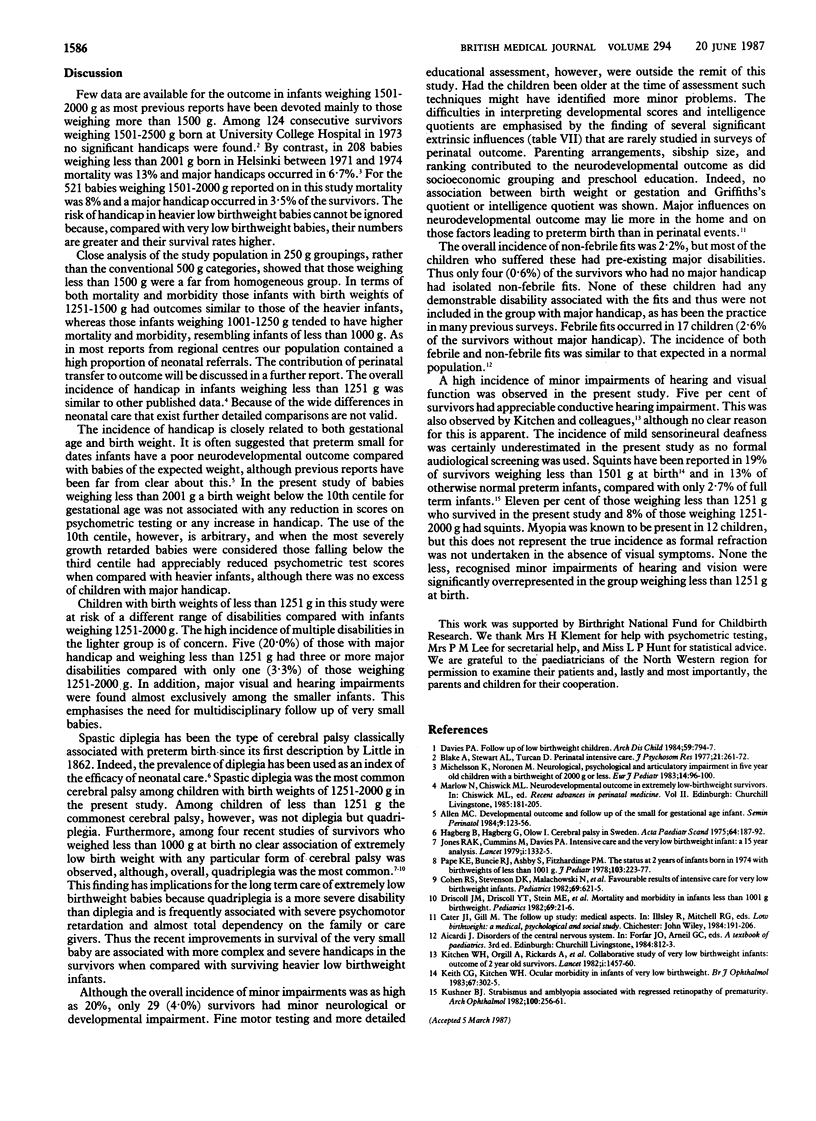
Selected References
These references are in PubMed. This may not be the complete list of references from this article.
- Blake A., Stewart A., Turcan D. Perinatal intensive care. J Psychosom Res. 1977;21(4):261–272. doi: 10.1016/0022-3999(77)90005-8. [DOI] [PubMed] [Google Scholar]
- Cohen R. S., Stevenson D. K., Malachowski N., Ariagno R. L., Kimble K. J., Hopper A. O., Johnson J. D., Ueland K., Sunshine P. Favorable results of neonatal intensive care for very low-birth-weight infants. Pediatrics. 1982 May;69(5):621–625. [PubMed] [Google Scholar]
- Davies P. A. Follow up of low birthweight children. Arch Dis Child. 1984 Aug;59(8):794–797. doi: 10.1136/adc.59.8.794. [DOI] [PMC free article] [PubMed] [Google Scholar]
- Driscoll J. M., Jr, Driscoll Y. T., Steir M. E., Stark R. I., Dangman B. C., Perez A., Wung J. T., Kritz P. Mortality and morbidity in infants less than 1,001 grams birth weight. Pediatrics. 1982 Jan;69(1):21–26. [PubMed] [Google Scholar]
- Hagberg B., Hagberg G., Olow I. The changing panorama of cerebral palsy in Sweden 1954-1970. I. Analysis of the general changes. Acta Paediatr Scand. 1975 Mar;64(2):187–192. doi: 10.1111/j.1651-2227.1975.tb03820.x. [DOI] [PubMed] [Google Scholar]
- Jones R. A., Cummins M., Davies P. A. Infants of very low birthweight. A 15-year analysis. Lancet. 1979 Jun 23;1(8130):1332–1335. doi: 10.1016/s0140-6736(79)91961-5. [DOI] [PubMed] [Google Scholar]
- Keith C. G., Kitchen W. H. Ocular morbidity in infants of very low birth weight. Br J Ophthalmol. 1983 May;67(5):302–305. doi: 10.1136/bjo.67.5.302. [DOI] [PMC free article] [PubMed] [Google Scholar]
- Kitchen W. H., Yu V. Y., Orgill A., Ford G. W., Rickards A., Astbury J., Ryan M. M., Russo W., Lissenden J. V., Bajuk B. Collaborative study of very-low-birthweight infants: Outcome of two-year-old survivors. Lancet. 1982 Jun 26;1(8287):1457–1460. doi: 10.1016/s0140-6736(82)92464-3. [DOI] [PubMed] [Google Scholar]
- Kushner B. J. Strabismus and amblyopia associated with regressed retinopathy of prematurity. Arch Ophthalmol. 1982 Feb;100(2):256–261. doi: 10.1001/archopht.1982.01030030258004. [DOI] [PubMed] [Google Scholar]
- Michelsson K., Noronen M. Neurological, psychological and articulatory impairment in five-year-old children with a birthweight of 2000 g or less. Eur J Pediatr. 1983 Dec;141(2):96–100. doi: 10.1007/BF00496798. [DOI] [PubMed] [Google Scholar]


